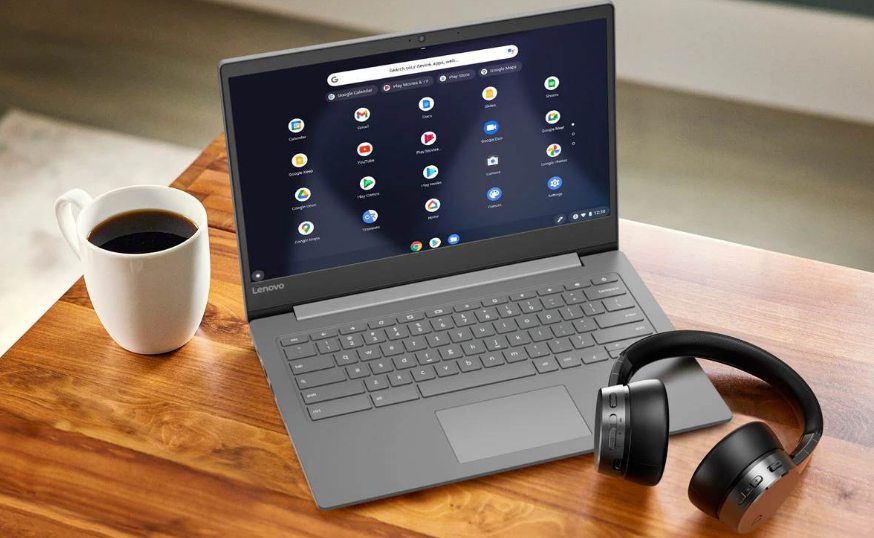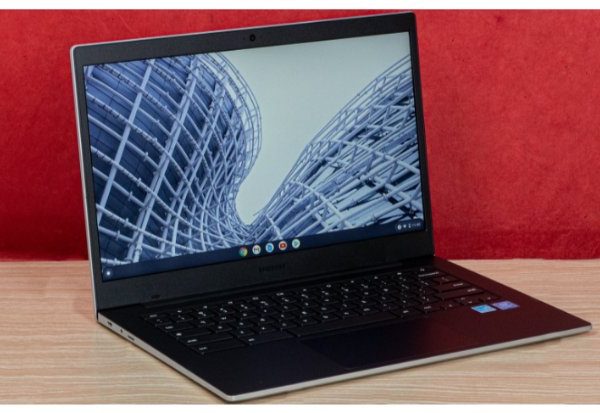A thorough tutorial on installing iTunes on a Chromebook is provided in this article. As a way to prepare you for the app, we’ll also go over how well iTunes works on Chromebooks.
Ways to Install iTunes on Chromebook
- By using Wine
- By using the iTunes website
- By Exporting Music from iTunes to YouTube Music
- By Using Virtual Machine Applications Like Parallels or VirtualBox
Use Wine to Install iTunes on a Chromebook
Since ChromeOS is essentially a Linux OS derivative, Wine—which enables the installation of Windows applications on Linux, including iTunes—can be installed using ChromeOS’s Linux capabilities. Make sure to create an iTunes account (if not already present) before beginning this multi-phase process (discussed below).
Enable the Linux Feature on Chromebook and Update It
- Launch the Chromebook Settings and in the left pane, head to the Linux Beta tab. Some users might discover the Linux tab under the Advanced menu.
- Now, in the right pane, click on Turn on and follow the prompts on the screen to set up Linux on Chromebook.
- Once the Linux setup is completed, the Linux Terminal is shown or you may launch it from the Applications menu, then execute the following in the Terminal:
sudo apt-get update && sudo apt-get upgrade -yInstall Wine on Chromebook and Enable Support for 32-Bit Applications- Now execute the following in the Linux Terminal to install Wine:
sudo apt-get install Wine- Then wait till the operation completes and afterward, execute the following (one by one) in the Terminal to enable support for 32-bit applications:
sudo dpkg --add-architecture i386
sudo apt update
sudo apt-get install wine32Download the iTunes 32-bit Version
- Launch a browser on Chromebook (similar to Chrome) and visit the iTunes page of the Apple website.
- Now click on Download and save the file on the Chromebook. Make sure to rename the file as something like iTunes.exe.
- Then move the file to Linux Files or share the location where the file is downloaded to Linux.
Install Wine 32-bit Version
- Open the Linux Terminal and execute the following:
WINEARCH=win32 WINEPREFIX=/home/username/.wine32/ wine iTunesSetup.exe- Now, in the iTunes installation window, click Next and then click on Install.
- Then follow the prompts on the screen to install iTunes.
- Now, open Applications on Chromebook and launch iTunes there to use it.
Create ITunes Shortcut
Some users might not like launching iTunes from Applications and may want to create a shortcut for it.
- Launch the File Manager of the Chromebook and go to the Linux Files.
- Now, click on the three vertical ellipses in the top right and select Show Hidden Files.
- Then navigate to the following path:
.local >> share >> applications >> wine >> Program Files >> iTunes- Now, right-click on iTunes.desktop and select Open With.
- Then, select Open With Text and enter the following after “Exec=” but make sure to replace <yourusername> with the actual username. A Text app may need to be installed by some users.
env WINEPREFIX="/home/yourusername/.wine32" wine "/home/<yourusername>/.wine32/drive_c/Program Files/iTunes/iTunes.exe"- Now save the file and close the Text app.
- Then, launch iTunes from the Using the Chromebook’s App Drawer and iTunes, everything is up and running. A user may also pin iTunes to the Chrome Shelf.

Use the iTunes Website
If the aforementioned approach is too difficult for the user or fails and the user is interested in Music from iTunes, then he may use the iTunes website, but it would be better to create a shortcut to the website. As an example, we’ll go over how to create a shortcut for the Apple website’s Music page in the Chrome browser.
- Launch Chrome and head to The Apple website’s Music page
- Now click on the three vertical ellipses in the top right corner of the window and in the Chrome menu, expand More Tools.
- Then, in the sub-menu shown, select Create Shortcut, and afterward, enter the shortcut name as iTunes.
- The Chromebook now has a shortcut on the desktop that can be used to access iTunes and play music.
Import the iTunes Music to the YouTube Music
For the sake of utilizing the Google ecosystem, many users might prefer to import their iTunes music to YouTube music. On a PC, a user must carry out these actions.
- Launch a web browser and head to the Website for music on YouTube.
- Now, drag and drop the iTunes music files to the YouTube music website.
- Then accept the YouTube TOS (if asked to) and wait till the process completes.
- Once completed, YouTube music can be used to play iTunes music. The Apple ecosystem (iPhone, iPad, etc.) supports YouTube music, which is the best part.) through the Users of the YouTube music app can easily sync their files.
Use a Virtual Machine Application
Although the Wine method did not succeed, some users might be interested in fully utilizing iTunes on a Chromebook. Utilizing a virtual machine application is the best course of action for these users. There are plenty of applications like Parallel Desktop for ChromeOS (it is a better option but paid one) but we will discuss the process for There is a warning to be aware of, namely, many of the Only Chromebooks powered by Intel can successfully run a virtual machine; Chromebooks powered by ARM processors may struggle.
Before proceeding, make sure to download a Windows ISO (if a high-end Chromebook is in use) or a lightweight Linux distro and the Chromebook does have space required for the guest OS for the virtual machine.
- Launch a web browser on the use your Chromebook to access the VirtualBox website’s Linux downloads page.
- Now click on Debian 10 and save the download (around 80 MB).
- Once downloaded, head to the downloaded location on the Chromebook and double-click the downloaded file.
- Then select Install with Linux and follow the prompts on the screen to install VirtualBox.
- Once installed, launch it from the Linux Apps Folder, and in the VirtualBox window, click on New.
- Now follow the prompts on the screen to install a guest OS in If the Chromebook is a high-end device, VirtualBox can emulate Windows, or it can run a lightweight Linux distribution.
- Once installed, launch the virtual machine and install iTunes on the guest OS.
- When you’re finished, open iTunes to see how well it works on your Chromebook.
Remember that running iTunes on a Chromebook requires a heavy workload, so use virtual machines instead.
Installing ITunes on Chromebooks: What You Should Know
Chromebooks are not compatible with the 64-bit version of iTunes (for Windows). Similar to how not all 32-bit iTunes versions function correctly in ChromeOS. The most recent version of 32-bit iTunes (v12.10.11) was installed on our test device, but the app was unusable because it frequently crashed. According to our investigation, other Chromebook users reported having a similar experience.
iTunes v12.9.3 (32-bit) was more stable, but it’s no longer available for download on Apple’s website is unavailable, probably due to an outdated version.
However, there are third-party Windows software download websites where you can get that particular iTunes version. In the Linux folder on your Chromebook, save the iTunes executable file. We named the setup document iTunesSetup.exe for the purposes of this tutorial.
Although the iTunes version functions, some of its features and capabilities might not be available. Additionally, the app version could have issues because it is an old and retired version.
Conclusion
iTunes is a very useful application for managing the iPhone and iPod resources which can easily be installed on any laptop. iTunes is not available for However, there are numerous ways for users to download iTunes on a Chromebook. Three different methods of installing or using iTunes on a Chromebook were mentioned in this article.
